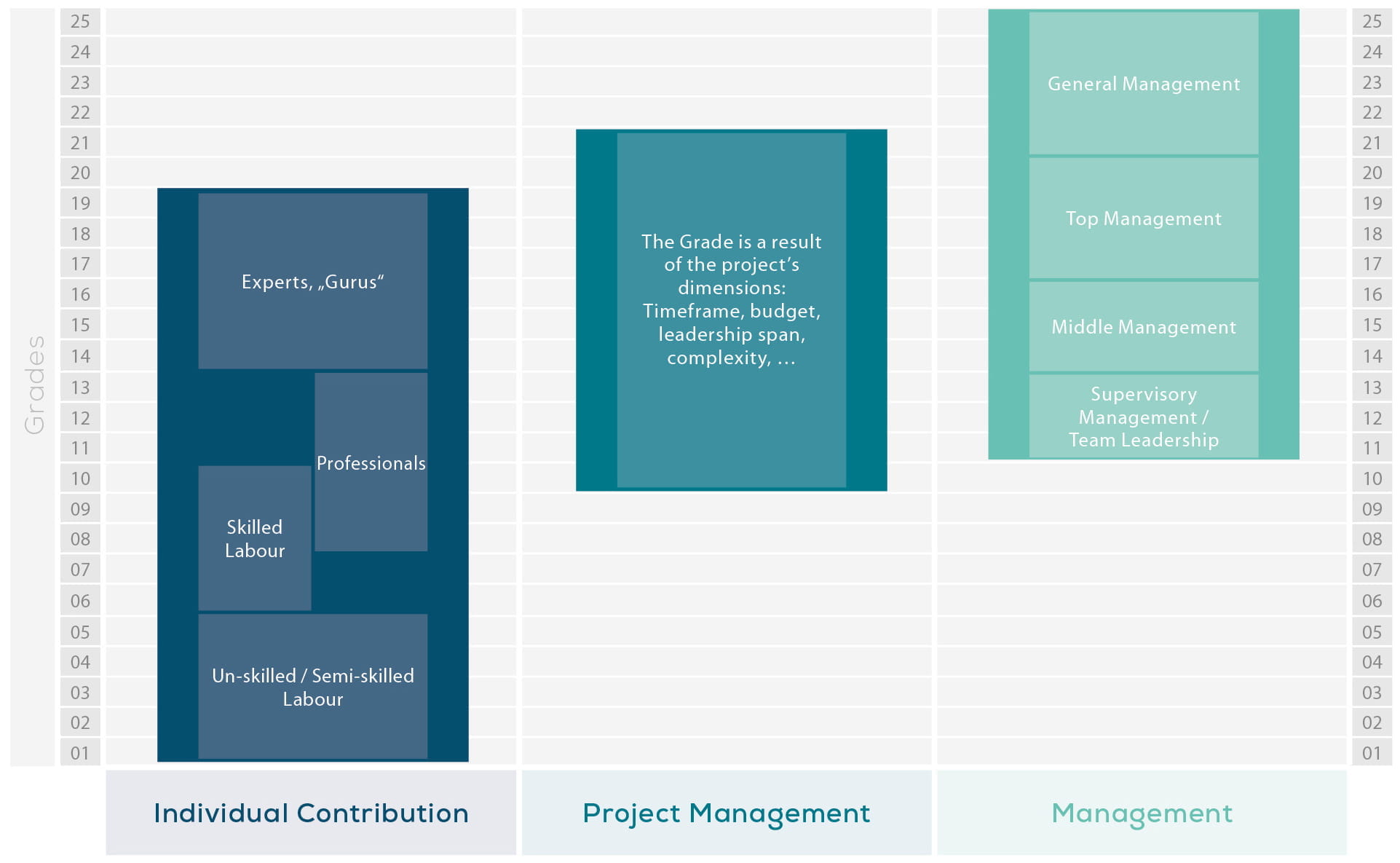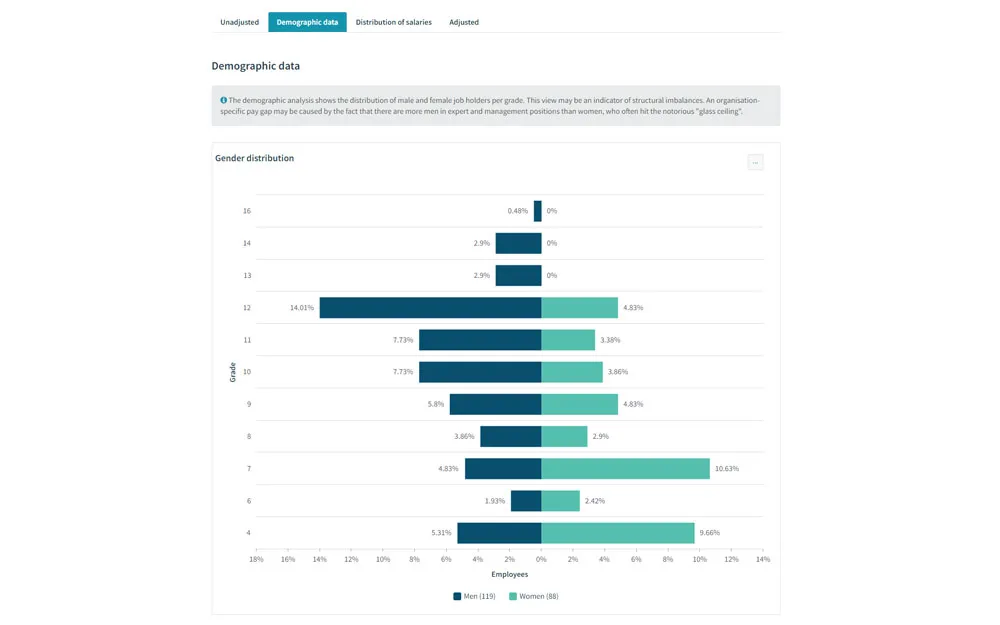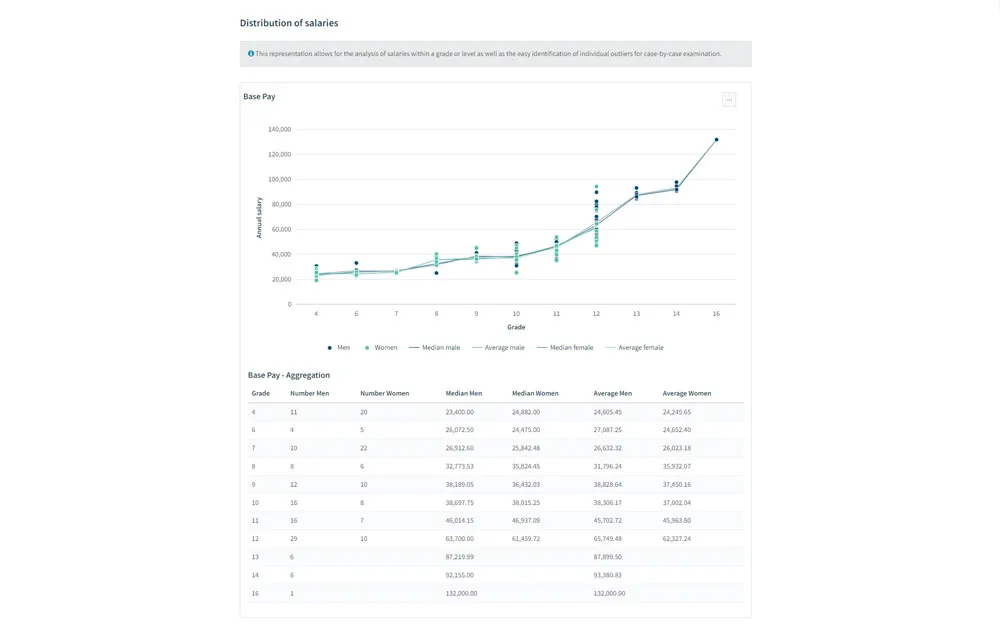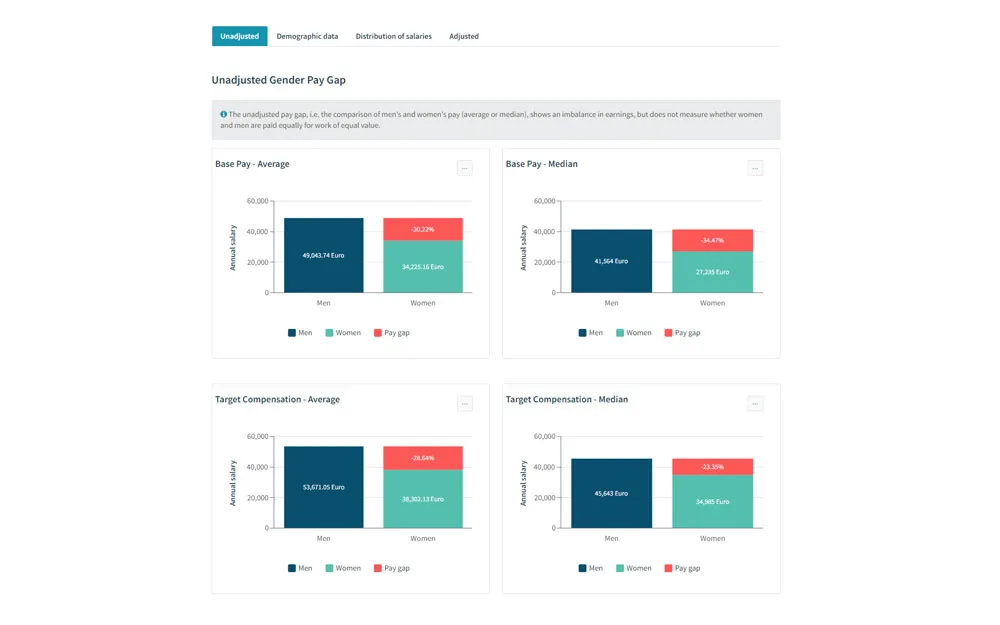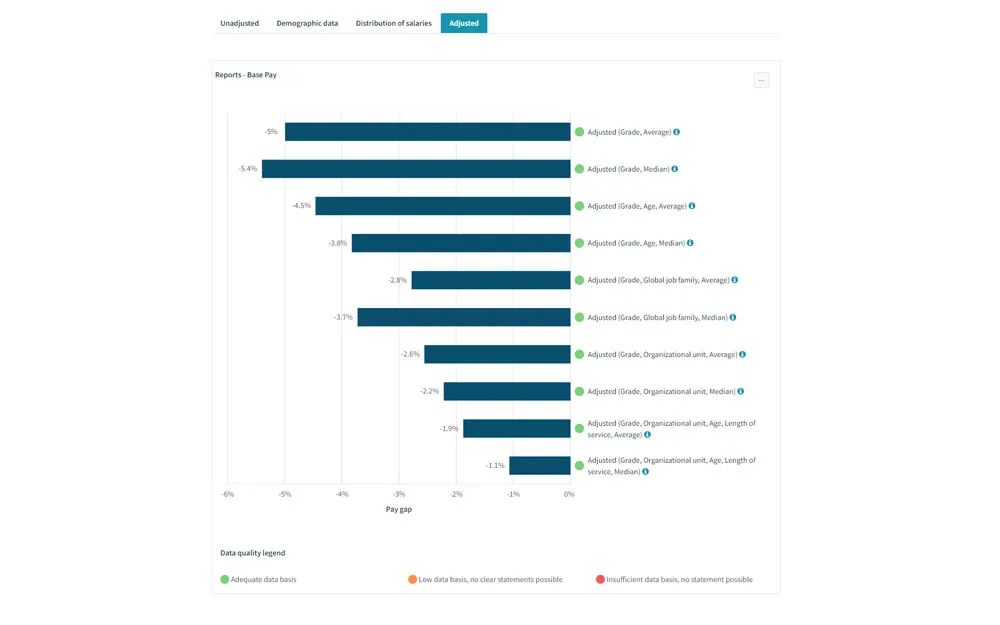Learn more about equal pay and our equal pay software
In the 21st Century, pay equity has never been more important. By law, employers must not pay an employee less as a result of their race, religion, sexual orientation, disability or any other characteristic. It means organisations must do everything in their power to ensure equal pay and equal opportunity - or risk facing legal issues.
The Benefits of Equal Pay
Equal pay is not just a ‘box ticking’ exercise, and has been proven to not only promote a fair society, but to deliver a tangible positive business impact through fair and equitable pay practises. Providing equal opportunity greatly enriches the talent pool, results in better employee retention and reduces the financial risks of equal pay claims in court.
That’s not to say the process is simple. To change the culture of an organisation towards a more transparent setting and promoting equality can be incredibly difficult. As HR professionals, we must play a central role in making it happen.
What’s the evidence for fair and equitable pay practices?
General pay satisfaction is more strongly related to distributive justice than to procedural justice. But, without structures, there can be no distributive or procedural justice!
Pay bands and job evaluation within gradar play a big part in achieving equity, fairness, consistency and transparency when managing gradings and pay - as well as avoiding discrimination and biased-decision making.
The Requirements For Your Business
Many countries across the globe have taken measures to encourage equal pay by implementing legislation centred about transparency through pay data reporting. Although legal requirements vary from country to country, the emphasis on pay equity can be seen throughout the world and must be taken as seriously as possible.
If Europe-wide initiatives had more legal weight, European men and women should have been paid equally for 60+ years. As early as the Treaty of Rome of 1957, equal pay was established as a constituent principle of the European Community.
As the EU has grown together, the issue has been emphasised several times, for example through the "Equal Treatment Directive" 2006/54/EC and related recommendations in 2014 (2014/124/EU).
However, the reality has always been and remains different: According to EU data, the pay gap between men and women is currently still around 14 per cent.
The Commission's latest proposal (COM/2021/93) has three objectives: Creating wage transparency, concretising key concepts of equal pay in a practical way and establishing enforcement mechanisms in the interests of workers.
Job evaluation as a means of choice runs through the entire draft.
Equal pay is not understood as equal pay for all. Rather, "any differences in pay must be based on objective, gender-neutral criteria." These criteria also form the basis for assessing work of equal value. The Commission mentions here "educational, training and occupational requirements, qualifications, workload and responsibility, work performed and the nature of the tasks performed."
There also seems to be a broad consensus that job evaluation should be analytical, thorough and objective, which could have a positive impact on the quality of the widespread evaluation and (collectively agreed) grading procedures.
Equal pay in the United Kingdom is governed by the Equality Act 2010, with Gender Pay Gap reporting regulations introduced in 2017. From that point on, regulations state that all companies with more than 250 employees must report their gender pay gap on their own website and to the Government. Organisations who cannot provide a satisfactory explanation for any pay inequality face unlimited fines.
In the USA, the governing federal law regarding pay equity is the Equal Pay Act of 1963, a legislation prohibiting gender-based wage discrimination between men and women in the same organisation. There is no requirement to report pay data, but the Lilly Ledbetter Fair Pay Act means each paycheck containing compensation discrimination is a separate, new violation - making it easier for employees to claim.
In Spain, decree 902/2020 takes effect in April 2021 and requires companies to keep an annual remuneration register covering all employees - including executives and senior managers. It must contain average and median pay data (for the 30 most often used salary types) broken down by gender, fringe benefits broken down by gender, and the appropriate professional classification. An explanation for any gender pay gap above 25% must be included.
Allowable Differences In Pay
There are some circumstances in which differences in pay may be allowed. It could be deemed acceptable for someone to be paid more than someone else of the opposite sex who does similar work for one of the following reasons:
- They’re better qualified with crucial job-related skills that are hard to recruit
- They have a salary weighting based on location, such as capital cities
- They work unsociable hours, such as night shifts, that demand a higher salary
Even when making every effort to follow these rules of “equal pay for equal value” companies may still be affected by external factors that can cause an imbalance of a job’s grade and related salary.
Markets change and the company’s budget for salary negotiations may decrease, or some jobs may be in higher demand and it’s necessary to pay higher sums to fill positions or to retain position holders.
In any case, the recommended approach for HR departments is to monitor these developments closely and to intervene if any exceptions start to become the rule. Factual and objective rationales for such variations must be provided.
The gradar Solution
At gradar, we meet all of the above requirements and can help you work towards greater pay equity in your organisation. Whether you’re conducting a pay audit or putting an equality plan in place, the grading of jobs in a point-factor-based, bias-free job evaluation system is a suitable first step. Our system is the solution.
You can combine the results of your job evaluation with external salary data to analyse the distribution of salaries within a grade among male and female employees - as well as the distribution of male and female employees among every grade. You can spot potential discrimination before it becomes a real issue.
Then, using our platform, you can dive deeper into pay differentiation within individual job families in relation to gender.
If the salary data can provide the information, considering the influence of age and years in service can deliver valuable insights into the pay policies of your organisation.
It’s also worth looking into practises concerning promotions, eligibility for bonuses, benefits, and allowances and performance appraisals. Measuring performance can be difficult and is often based on subjective assessments from individual managers. With gradar’s integration of TMA’s competency library, the application of its behavioural anchors in the process reduces this risk and makes it easier to spot potential discrimination.
Fair pay for the jobs in your business with a high level of objectivity.
Think of gradar as the one-stop-shop for all job-related data in your business. Our software forms the basis of talent and reward structures and allows you to deliver your own bias-free, consistent job grading results. Our standardised, qualitative tool helps you ensure fair pay for the jobs in your business with a high level of objectivity.
Got questions?
Customer support is our top priority - and we’re always available to lend a hand! We’d be happy to arrange a call, live demo or extended evaluation period.

